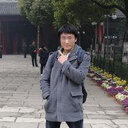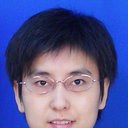Angiotensin-(1-7) attenuates lung fibrosis by way of Mas receptor in acute lung injury.
Kulcsszavak
Absztrakt
BACKGROUND
Pulmonary fibrosis occurs in approximately 60% of patients with acute respiratory distress syndrome and has been significantly correlated with a poor outcome. The overexpression of angiotensin (Ang) II can induce lung inflammation and fibrosis. This observation, coupled with the knowledge that Ang-(1-7) is considered to be an endogenous antagonist of Ang II, led us to hypothesize that Ang-(1-7) would prevent lung remodeling in patients with acute respiratory distress syndrome.
METHODS
The protocol involved five groups: (1) control, (2) lipopolysaccharide (LPS), (3) losartan as a positive control group, (4) Ang-(1-7), and (5) [D-Ala7]-Ang-(1-7) (A779), an antagonist of the Ang-(1-7) receptor. Acute lung injury was induced by an intratracheal injection of LPS 5 mg/kg in C57BL/6 mice. Losartan (10 mg/kg) was administered by gavage daily, starting from 1 d before LPS stimulation. Ang-(1-7) or A779 in saline (100 ng/kg/min) was infused subcutaneously 1 h before acute lung injury induction for 3 or 7 d. The lung tissues were harvested for analysis at day 3 or 7 after injection of LPS.
RESULTS
LPS stimulation resulted in significantly increased inflammation, edema, and lung collagen production. With Ang-(1-7) treatment, the lung fibrosis score and hydroxyproline level were significantly reduced, and the expression of transforming growth factor-β and Smad2/3 were decreased on days 3 and 7. Losartan attenuated lung fibrosis similarly to Ang-(1-7) after LPS exposure. In the A779 group, a tendency was seen to aggravate collagen deposition and lung remodeling.
CONCLUSIONS
These findings indicate an antiremodeling role for Ang-(1-7) in acute lung injury, similar to the blocker of Ang II receptor, that might be at least partially mediated through an Ang-(1-7) receptor.




